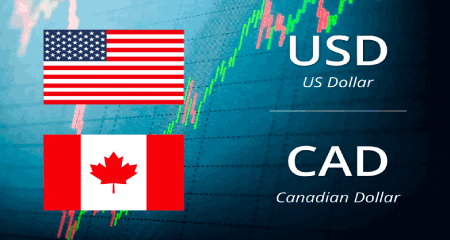
USD/CAD witnessed heavy selling on Friday
The USD/CAD pair maintained its offered tone below mid-1.2700s through the North American session and had a rather muted reaction to the US/Canadian macro releases. A combination of factors exerted heavy pressure on the USD/CAD pair and dragged spot prices away from the highest level since March 9, around the 1.2875-1.2880 area touched the previous day. Crude oil prices climbed to a near two-week high amid concerns that falling output in sanctions-hit Russia will tighten supply. This, in turn, underpinned the commodity-linked loonie and attracted some follow-through selling around the major amid broad-based US dollar weakness. The USD downfall could be attributed to month-end profit-taking following the recent strong bullish run to the five-year high.0
That said, expectations that the Fed would tighten its monetary policy at a faster pace to curb soaring inflation should act as a tailwind for the buck. The bets were reaffirmed by the Personal Consumption Expenditure (PCE) Price Index, which accelerated to a 6.6% YoY rate in March from the 6.3% reported in the previous month.
Additional details revealed that the Core PCE Price Index - the Fed preferred inflation gauge, which excludes seasonally volatile products - eased to 5.2% YoY in March from 5.3% previous. The disappointment, to a larger extent, was offset by a sharp jump in the Employment Cost and a stronger-than-expected rise in the Personal Income/Spending data. The data all but confirms that the Fed would hike interest rates by 50 bps at its meeting next week. From Canada, the monthly GDP report showed that the economy expanded by 1.1% in February, surpassing consensus estimates pointing to the 0.8% growth. The backward-looking data, however, did little to impress traders or provide any meaningful impetus, leaving the USD/CAD pair at the mercy of the USD/oil price dynamics.
Additional details revealed that the Core PCE Price Index - the Fed preferred inflation gauge, which excludes seasonally volatile products - eased to 5.2% YoY in March from 5.3% previous. The disappointment, to a larger extent, was offset by a sharp jump in the Employment Cost and a stronger-than-expected rise in the Personal Income/Spending data. The data all but confirms that the Fed would hike interest rates by 50 bps at its meeting next week. From Canada, the monthly GDP report showed that the economy expanded by 1.1% in February, surpassing consensus estimates pointing to the 0.8% growth. The backward-looking data, however, did little to impress traders or provide any meaningful impetus, leaving the USD/CAD pair at the mercy of the USD/oil price dynamics.
